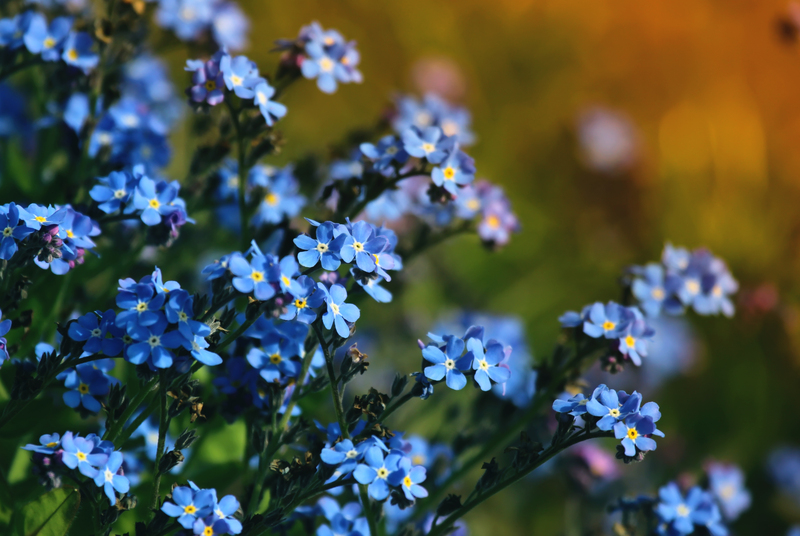Detecting Grub Issues in Your Grass
Posted on 13/06/2025
Lawns add aesthetic value to any home or public space, providing a lush, green backdrop that soothes the senses. However, maintaining a perfect lawn is not always straightforward. One of the biggest challenges garden enthusiasts face is dealing with grubs. Grubs are the larval stage of various beetles, and they can wreak havoc on grass if left unchecked. This article will delve deep into how to detect grub issues in your grass, offering insights and strategies to identify and manage these pesky intruders.
Understanding Grubs
Before you can detect grub issues, it's crucial to understand what grubs are. Grubs are the larvae of beetles, such as Japanese beetles, June beetles, and European chafers. They are typically white, C-shaped, and found in the soil. While a few grubs in your lawn may not cause significant damage, a higher population can lead to severe lawn issues.

Signs of Grub Damage
Detecting grub issues starts with recognizing the signs of damage they cause. Here are several indicators that your lawn may have a grub problem:
1. Patchy, Brown Grass
One of the most obvious signs of a grub problem is the appearance of patchy, brown grass. Grubs feed on the roots of grass, cutting off the plant's ability to absorb water and nutrients. This results in brown, wilted patches of grass that can be easily pulled up like a loose carpet.
2. Increased Animal Activity
Animals such as raccoons, skunks, and birds often dig up lawns in search of grubs to eat. If you notice unusual digging or scratching in your yard, it could be a sign that grubs are present below the surface.
3. Spongy Turf
Another indicator of grub issues is the spongy feel of your turf. As grubs consume the roots of the grass, the grass becomes detached from the soil, making the turf feel spongy or bouncy when you walk on it.
4. Increased Weed Growth
A healthy lawn naturally suppresses weed growth. However, areas of grass damaged by grubs are often overtaken by weeds, as the weakened turf cannot compete with the invasive plants.
How to Check for Grubs
If you observe any of the above signs, it's time to take a closer look. Here's how to check for grubs in your lawn:
1. Cut a Square Foot of Turf
Use a spade to cut a square foot section of turf about 2-4 inches deep. Carefully lift the section to examine the soil underneath. Look for C-shaped, white larvae.
2. Count the Grubs
If you find more than five grubs per square foot, it's likely that you have a significant grub issue. A few grubs here and there are normal and generally not harmful to the lawn.
When to Check for Grubs
Grubs are most active in late summer and early fall. This is the best time to check for them, as they are closer to the surface and easier to find. However, grub damage is often noticed in the spring when the lawn begins to green up and recover from winter dormancy.
Preventive Measures
Once you've identified a grub problem, there are several measures you can take to prevent future infestations:
1. Maintain a Healthy Lawn
A healthy, well-maintained lawn is less susceptible to grub damage. Regular watering, fertilizing, and mowing can make your grass more resilient and better able to recover from minor grub infestations.
2. Natural Predators
Introduced beneficial nematodes, which are microscopic worms that prey on grubs. These can be a natural and effective way to control grub populations without resorting to chemical treatments.
3. Milky Spore
Milky spore is a bacterium that specifically targets Japanese beetle grubs. When applied to the lawn, it infects and kills the grubs. Although it takes a few years to become fully effective, milky spore can provide long-term control of grub populations.

Treatment Options
If you find that you have a grub infestation, there are several treatment options available:
1. Chemical Treatments
Insecticides containing imidacloprid or chlorantraniliprole are commonly used to control grubs. These chemicals should be applied in late summer or early fall when grubs are most active. Always follow the manufacturer's instructions and consider the environmental impact before using chemical treatments.
2. Lawn Repair
After treating for grubs, you may need to repair damaged areas of your lawn. Reseeding or laying sod can help restore the appearance of your yard. Be sure to water and fertilize the new grass regularly to encourage strong root growth.
3. Professional Services
If you're not comfortable handling grub infestations yourself, consider hiring a professional lawn care service. These experts can assess the extent of the damage and recommend the best course of action to restore your lawn.
Conclusion
Detecting grub issues in your grass is essential for maintaining a healthy, vibrant lawn. By understanding the signs of grub damage and knowing when and how to check for these pests, you can take proactive steps to manage their population and minimize their impact. Remember to keep your lawn healthy through regular maintenance, and consider both natural and chemical treatment options if you find a grub infestation. With the right approach, you can ensure that your lawn remains a beautiful and inviting space for years to come.







